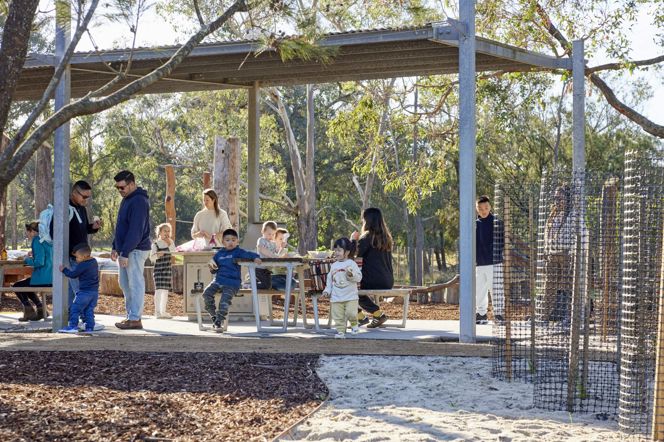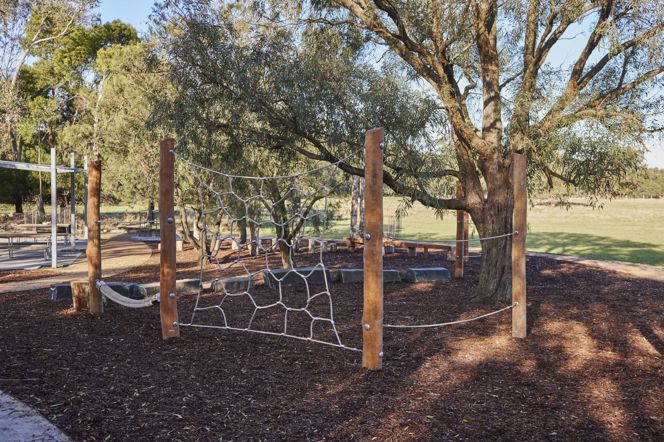
Royal Botanic Gardens Cranbourne opens new playground to inspire the next generation of nature lovers
Today, Royal Botanic Gardens Cranbourne launched its new Woodland Picnic Area nature playground designed to inspire the next generation of nature lovers.
“We are thrilled to launch the new Woodland Picnic Area Playground, which combines the best of nature play with the picturesque surrounds of Royal Botanic Gardens Cranbourne,” said Chris Russell, Executive Director Cranbourne Gardens.
The playground is located in the Gardens’ Conservation Zone and is made from recycled materials from the Gardens as well as locally sourced materials.
“Under the shade of native trees, the playground merges with the surrounding bushland. Children can look out for wildlife in the trees and may even come across wombat tracks in the sandpit,” said Mr Russell. “We wanted to create a playground where children could safely explore their skills and abilities, and fall in love with nature,” he said.
The playground’s features include sandpits, giant logs, swings, climbing ropes, a fallen tree, giant banksia cross-sections which collect puddles, basalt stone seats/tables, possum prints and “insect doors and hotels”. It is situated next to a large, covered BBQ facility with picnic tables, where people of all cultures can enjoy the space while supervising children.
The playground was designed by Andrea Proctor Landscapes with unique features such as a “Gifting Basket”, which teaches children to leave feathers, stones and seeds behind, and Aboriginal Weelam Poles, where children can build their own cubby houses from recycled branches.
“We consulted the local community including children, the Aboriginal community, the Learning team at Royal Botanic Gardens Cranbourne, and its staff more broadly to develop the playground of their dreams,” said Ms Proctor.
“This playground reflects how Gardens staff loved to play as children and what inspired them to become passionate about conservation and nature today,” she said.
Another theme emerging in our research was to allow children to develop their skills over time and to teach children how to play safely and considerately in the bush,” said Ms Proctor.
Additional features include an open classroom, and lounging nets designed for teenagers. The design also encourages younger children to play closer to their parents.
Wheelchair/pram access areas include concrete paths, outdoor learning area, picnic areas, basket swing, and cubby building area. The tactile lounging nets and swing will suit neuro-diverse persons combined with the quiet open surroundings.


